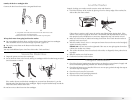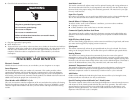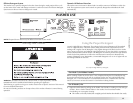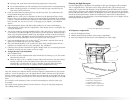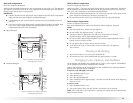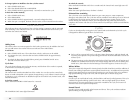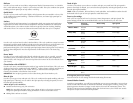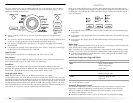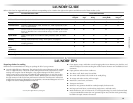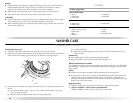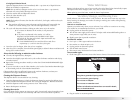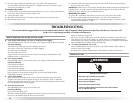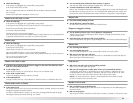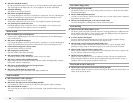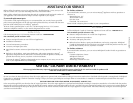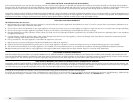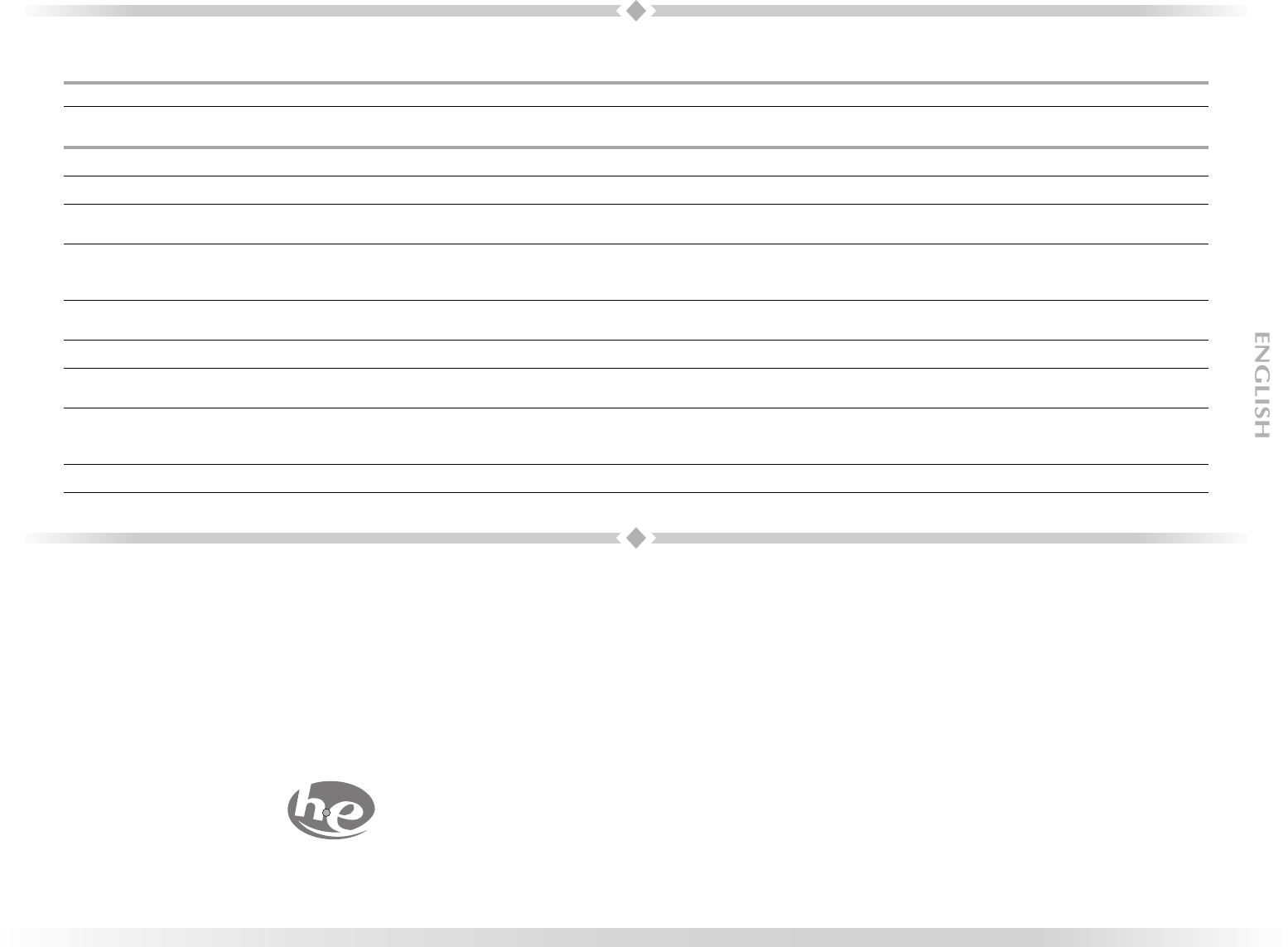
19
LAUNDRY GUIDE
Refer to this chart for suggested load types and their corresponding cycles. Listed to the right are the options available to each of these washer cycles.
CYCLE SUGGESTED LOAD TYPE AVAILABLE OPTIONS
Signal
ON/OFF
Delay
Start
Extra
Rinse
Fresh Spin
(Fresh Hold)
Max
Extract
TM
Whitest Whites Heavily soiled white fabrics
✓ ✓ ✓ ✓ ✓
Heavy Duty Heavily soiled underwear, towels, work clothes, shirts, etc.
✓ ✓ ✓ ✓ ✓
Normal/Casual Normally soiled blouses, shirts, overalls, etc., made of polyester, nylon,
linen, or cotton blends
✓ ✓ ✓ ✓ ✓
Delicate Use this cycle to wash no-iron fabrics and garments labeled “Permanent
Press” or “Wrinkle Free” or that indicate using a “Gentle” cycle on the
care label.
✓ ✓ ✓ ✓
Quick Wash Lightly soiled sports wear made of cotton, polyester, nylon, or cotton
blends
✓ ✓ ✓ ✓
Sanitary Heavily soiled underwear, towels, work clothes, and diapers.
✓ ✓ ✓ ✓ ✓
Power Wash Heavily soiled work wear-overalls, coveralls, sweatshirts, pants, and
outdoor garments.
✓ ✓ ✓ ✓ ✓
Clean Washer
with
AFFRESH™
No clothes
✓ ✓
Rinse & Spin Fabrics made of cotton, linen, polyester, or nylon
✓ ✓ ✓
Drain & Spin Fabrics made of cotton, linen, polyester, or nylon
✓ ✓ ✓
LAUNDRY TIPS
Preparing clothes for washing
Follow these recommendations to help you prolong the life of your garments.
Use only High Efficiency detergents. The package for this type of detergent will be marked
“HE” or “High Efficiency.” This wash system, along with less water, will create too much
sudsing with a regular non-HE detergent. Using regular detergent will likely result in
washer errors, longer cycle times, and reduced rinsing performance. It may also result in
component failures and noticeable mold or mildew. HE detergents are made to produce
the right amount of suds for the best performance. Follow the manufacturer’s instructions
to determine the amount of detergent to use.
Remember, concentrated detergents such as 2x
or higher will use less detergent based on load size.
Use only HE High Efficiency detergent.
Close zippers, snaps, and hooks to avoid snagging other items. Remove pins, buckles, and
other hard objects to avoid scratching the washer interior. Remove non-washable trim and
ornaments.
Empty pockets and turn them inside out.
Turn down cuffs; brush away lint and dirt.
Turn wool and synthetic knits inside out to avoid pilling.
Tie strings and sashes so they will not tangle.
Mend tears, loose hems, and seams.
Treat spots and stains.
Stained or wet garments should be washed promptly for best results.
Mix large and small items, avoid washing single items, and load evenly.
Wash small items, such as infant socks, in a mesh garment bag. To create a balanced load,
it is recommended that more than one garment bag be used, and that each garment bag
be filled with equal amounts of material.



